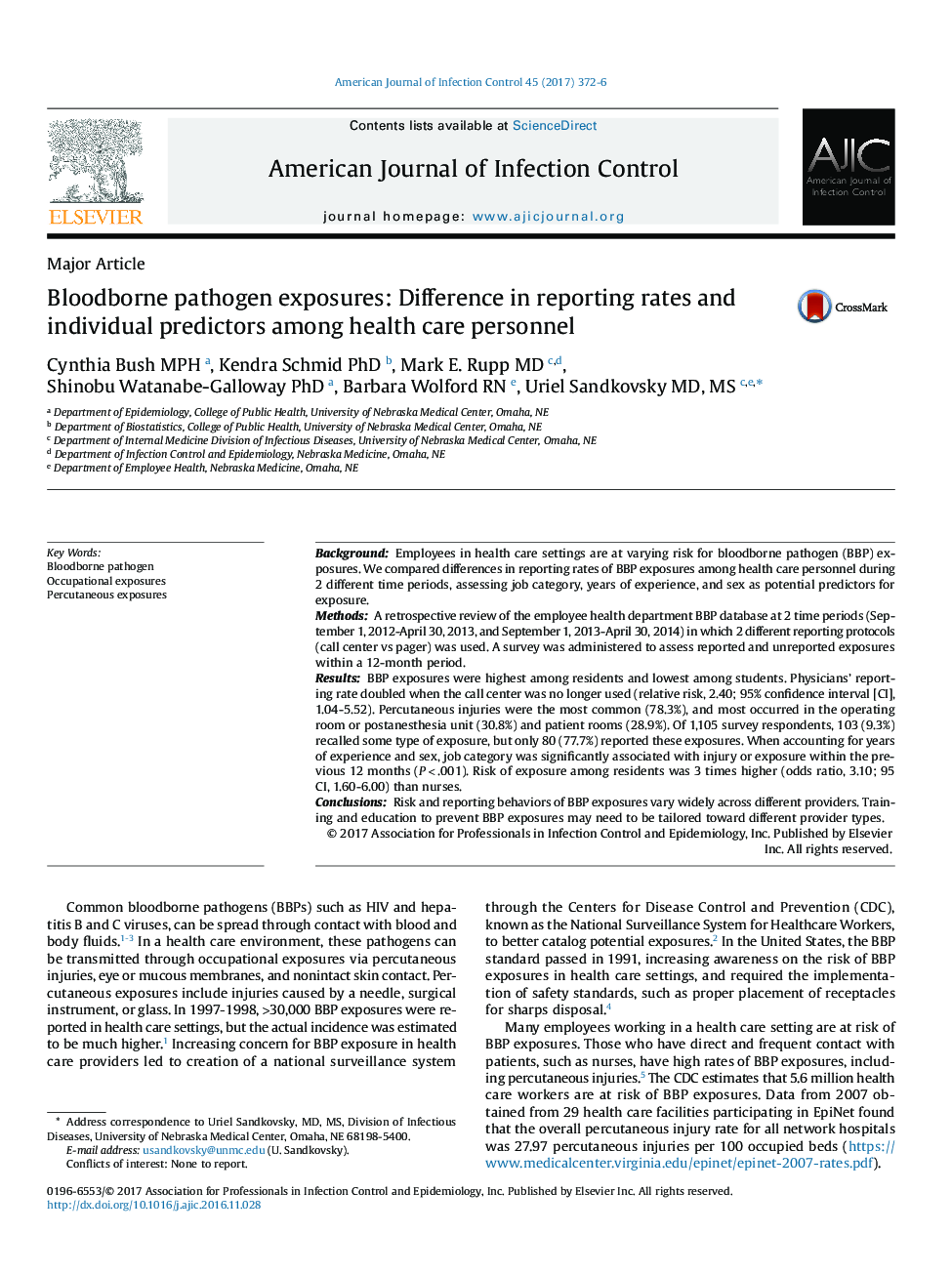| Article ID | Journal | Published Year | Pages | File Type |
|---|---|---|---|---|
| 5566661 | American Journal of Infection Control | 2017 | 5 Pages |
â¢Health care workers are at constant risk for bloodborne pathogen exposures.â¢The most common type is percutaneous exposure, mostly occurring on the floors and in the operating room.â¢Medical residents are at the highest risk and account for the highest proportion of exposures, highlighting the need for closer supervision and training.
BackgroundEmployees in health care settings are at varying risk for bloodborne pathogen (BBP) exposures. We compared differences in reporting rates of BBP exposures among health care personnel during 2 different time periods, assessing job category, years of experience, and sex as potential predictors for exposure.MethodsA retrospective review of the employee health department BBP database at 2 time periods (September 1, 2012-April 30, 2013, and September 1, 2013-April 30, 2014) in which 2 different reporting protocols (call center vs pager) was used. A survey was administered to assess reported and unreported exposures within a 12-month period.ResultsBBP exposures were highest among residents and lowest among students. Physicians' reporting rate doubled when the call center was no longer used (relative risk,â2.40; 95% confidence interval [CI], 1.04-5.52). Percutaneous injuries were the most common (78.3%), and most occurred in the operating room or postanesthesia unit (30.8%) and patient rooms (28.9%). Of 1,105 survey respondents, 103 (9.3%) recalled some type of exposure, but only 80 (77.7%) reported these exposures. When accounting for years of experience and sex, job category was significantly associated with injury or exposure within the previous 12 months (Pâ<â.001). Risk of exposure among residents was 3 times higher (odds ratio, 3.10; 95 CI, 1.60-6.00) than nurses.ConclusionsRisk and reporting behaviors of BBP exposures vary widely across different providers. Training and education to prevent BBP exposures may need to be tailored toward different provider types.
